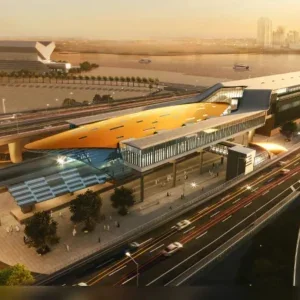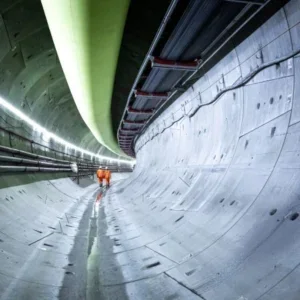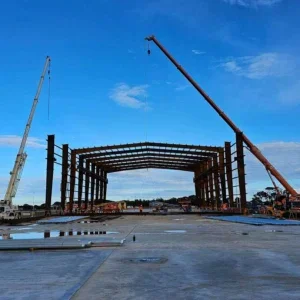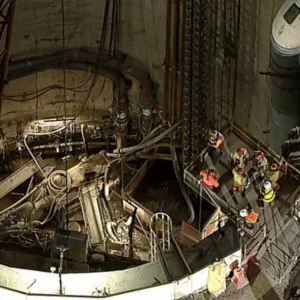Electrowatt Infra has been awarded a US$1.22M extension to its services contract on the difficult Kunming water supply tunnel project in China.
The Zhangjiuhe River Water Diversion & Water Supply Project Administration Bureau in Kunming awarded the contract as a continuation of the original assignment that commenced in 2001 and will now run until 2007.
Overall, the US$476M project includes 97.72km of water conveyance line, most of which is in tunnel, but Electrowatt is involved with the Shanggongshan and Kangle tunnels at 13.7km and 7.8km long respectively. The US$35M CW-Bid1 contract for these tunnels was awarded to Italian contractor CMS.These were originally to be excavated by the same 3.65m diameter doubleshield TBM, with a precast lining and backfilled with peagravel then grouted with cement.
T&TI was told that difficult ground conditions encountered by the TBM in the Shanggongshan tunnel led to a revision of this assumption. After repeated blockages to the TBM, the final 3km section of the tunnel is being excavated by drill and blast. In addition, to meet the programme, multiple headings had to be started, with the lining being revised to a cast in-situ concrete lining installed after excavation is complete. The revised approach was applied successfully in the Kangle tunnel to accelerate progress.
A Robbins doubleshield was used on the project, with muck transport by rail. The train consisted on six segment cars to transport two rings, plus one gravel car, one cement car, one personnel car and nine muck cars to transport the spoil generated by two TBM strokes.
With overburden varying between 350m and 20m, geology expected was predominantly schist or dolomites. Several fault zones were found to intersect the alignment and resulted in collapses that stopped the TBM. In some instances, these required bypass works and injections of polyurethane grout to continue. T&TI was told that when advancing, the TBM performed well through “difficult rock zones with still acceptable progress”. The problem was more the long lasting blockages of the TBM from face collapses. Difficulties were described with guiding the TBM through ground that is able to accommodate the gripper forces.







